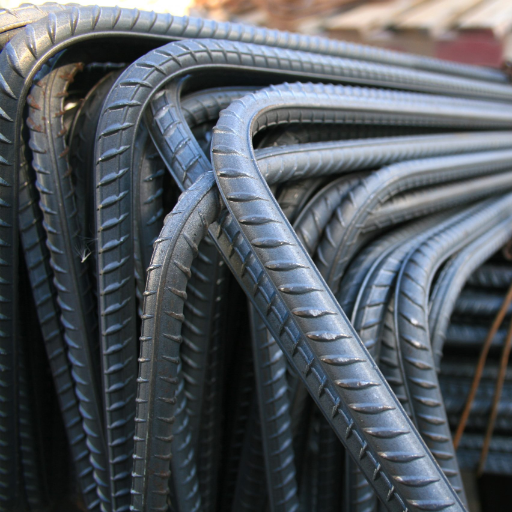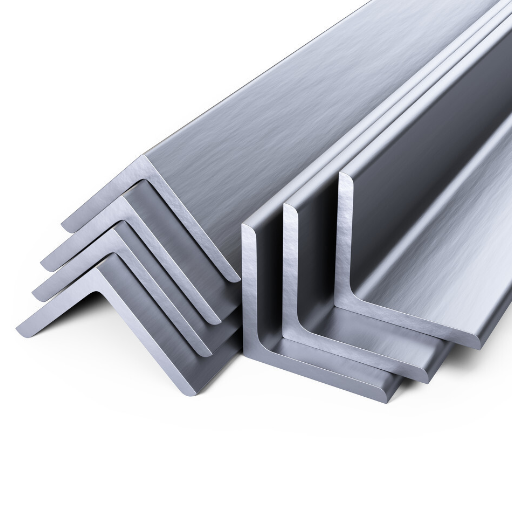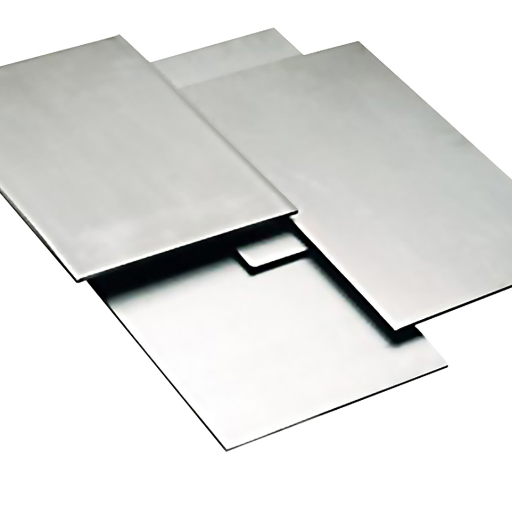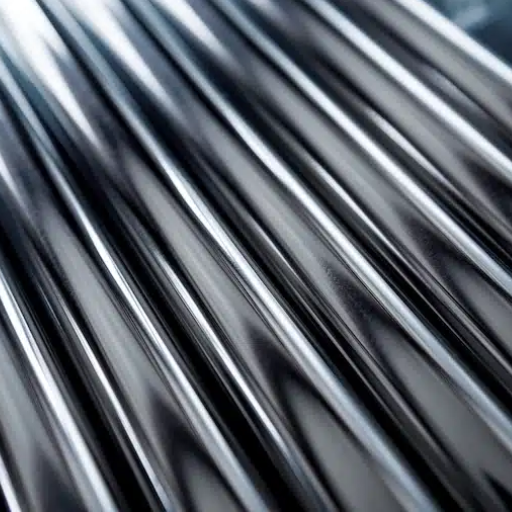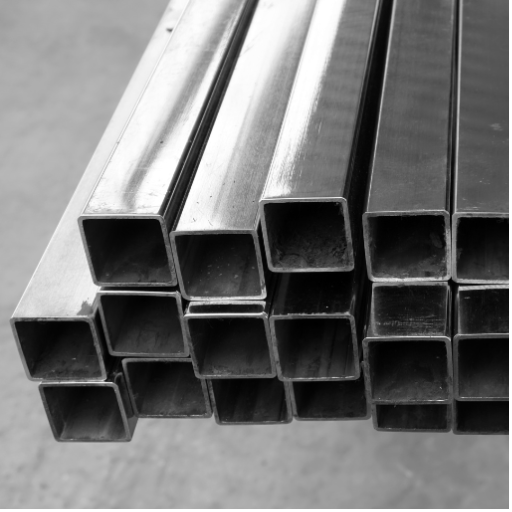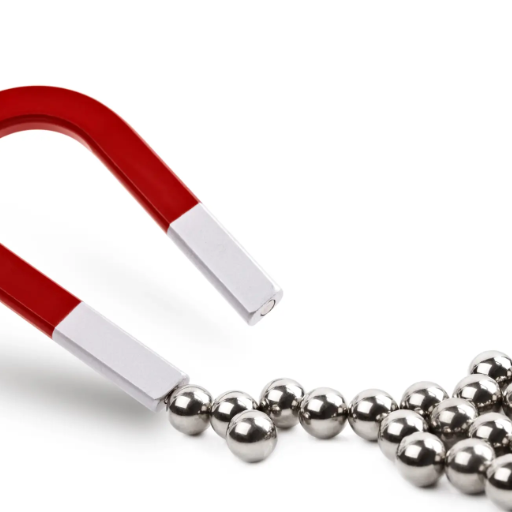Galvanized steel sheet metal is a versatile and durable material widely used across industries due to its superior corrosion resistance and cost-effectiveness. This article will serve as a comprehensive guide to understanding galvanized steel sheet metal, its manufacturing processes, key properties, and the various applications it serves. We will also explore the advantages it offers over other materials, how to select the appropriate type for specific projects, and essential maintenance practices to extend its longevity. By the end of this guide, readers will have a detailed understanding of galvanized steel sheet metal and its significance in modern industrial and construction applications.
What is Galvanized Steel Sheet and How is it Made?

Galvanized Steel comprises steel that has been covered with a layer of zinc for corrosion protection and increased durability. Galvanization is mostly done through hot-dip galvanizing, wherein steel sheets are dunked into molten zinc so that it forms a metallurgical bond with the zinc. The outcome is a sturdy coating that is highly resistant to rust and environmental degradation, which is perfect for use in construction, automotive, mobile and industrial applications. Other methods of galvanization, like electro-galvanization, cover zinc by using electrochemical means, which produces better surface finishing for precise applications.
Understanding Galvanized Steel Production
There are particular steps to be followed for the production of galvanized steel which increases durability and protects it from corrosion. The base steel goes through a pickling step which cleans the metal by removing rust, scale, and oil using acids. After cleaning, the steel goes through a process called fluxing where it is treated with a chemical which enables more effective bonding with zinc.
The primary method of galvanization is hot dip galvanizing, which requires the steel sheet to be dipped in molten zinc at a temperature of 860 degrees Fahrenheit. This causes a chemical reaction that builds a layer of zinc iron alloy on the surface of the steel. The zinc coating is solidified after the steel is cooled down in either water or air. For applications that need thinner layers of zinc, electro-galvanization is more suitable as it uses electricity to coat the steel with zinc, giving a smooth finish. These two methods ensure that the steel can be used in a variety of industries from construction to automotive and even appliance manufacturing. Both methods provide steel, which is durable and has low corrosion resistance, making it ideal in harsh environments.
The Role of Zinc Coating in Corrosion Resistance
Galvanic protection is a vital component of cathodic protection, which is the process of shielding exposed steel components from corrosion with a zinc oxide layer by sacrificing the outer diagonal zinc cathode layer. Due to a lower electrode potential, zinc sacrificial anodes preferentially corrode and galvanically protect the material underneath,<span> </span> while simultaneously zinc coating acting as a physical barrier to block oxygen, moisture, and other corrosive agents from attacking the steel surface. What makes zinc oxide coating remain useful despite over time damage and scratches, the exposed areas make it useful over time. Regular oxidation of zinc further gives rise to the surface layer of zinc carbonate that protects rust, which further makes it useful in structural protection.
Types of Galvanization Processes
Galvanization processes are essential in enhancing steel’s strength and resistance to corrosion through the application of a zinc coating. The three primary types of galvanization include:
- Hot-Dip Galvanizing (HDG): This is the most common process, where steel is immersed in molten zinc at approximately 840°F (449°C). This procedure forms a metallurgical bond between the steel and zinc, creating a durable, rust-resistant coating. HDG is widely used for large structural components like bridges, pipelines, and outdoor steel products due to its uniform coating and ability to protect even internal cavities.
- Electro-Galvanizing: Also referred to as electrolytic galvanizing, this process involves applying a zinc coating using an electric current in a zinc sulfate or chloride solution. The result is a thinner, more precisely controlled zinc layer compared to HDG. It is best suited for applications requiring a consistent surface appearance, such as automotive parts, appliances, and small industrial components.
- Continuous Galvanizing: Used mainly for sheet metals or wire products, this method involves passing the steel continuously through a molten zinc bath, ensuring a uniform coating. The steel is cut to the desired length after the coating is applied. This process is widely utilized in the production of steel sheets for roofing, siding, and automotive industries.
Each method is tailored to specific applications and requirements, ensuring optimal performance in various environmental conditions while extending the lifespan of the steel components.
What are the Benefits of Using Galvanized Steel Sheet?

Galvanized steel sheets provide many key benefits due to their protective zinc coating. First of all, they offer remarkable anti-corrosion capabilities which guarantee their effectiveness in harsh environmental conditions. As a result, the protective steel does not need frequent maintenance or replacement due to corrosion. Second, galvanized steel is also cost efficient because of its low initial price and long term savings in maintenance. Furthermore, it is very flexible and can be used for various purposes such as construction, automotive, or industrial work. The zinc coating has the added benefit of improving the appearance of the steel along with facilitating processes such as painting or welding. All these advantages promote the use of galvanized steel sheets for various industries and projects.
Durability and Rust Prevention
Galvanized steel sheets use a zinc coating that serves as a physical and chemical rust barrier to corrosion to provide exceptional resistance as well as durability to rust. This coating bonds to the steel surface and prevents oxidation, greatly increasing the product lifespan in chemically aggressive and moisture-rich environments. The galvanized layer also provides cathodic protection, meaning the zinc will corrode sacrificially to protect the underlying steel, making it less likely for minor scratches or damages to corrode. About untreated steel, galvanized steel requires almost no maintenance, which ensures maximum performance over time while minimizing costs and the need for frequent replacements in challenging tasks. This combination of features makes galvanized steel a highly dependable choice for projects exposed to harsh or dynamic environmental conditions.
Cost-Effectiveness Compared to Other Metal Sheets
Galvanized steel sheets are extremely economical when looked at alongside metal sheets like aluminum and stainless steel. Coated zinc offers protection from corrosion for the long term, while, at the same time, being much cheaper than stainless steel, which has high initial costs. While aluminum is lightweight and does resist corrosion naturally, it is still more expensive and weaker for structural applications that need greater strength. In addition, the steel is also low maintenance, which, along with its increased durability, lowers its overall cost throughout its lifespan. This greatly increases its usefulness for industries that are cost sensitive but need a reliable performance under harsh environmental conditions.
Environmental Impact of Galvanized Steel
The durability and recyclability of galvanized steel offers several environmental pros. The zinc coating enhances the corrosion and rust resistance of steel zinc products, which minimizes replacements and resource use over time. Furthermore, galvanization ensures that galvanized steel can be recycled at the end of its lifecycle, allowing for both the steel and zinc to be repurposed in new manufacturing processes. In modern times, the galvanization process is far more efficient in that modern systems use less energy and emit less pollution than older methods. Although there is some energy cost concern from mining and refining zinc, as well as zinc contaminating the ecosystem, proper waste management practices mitigate these issues. For this reason, galvanized steel remains an environmentally friendly option for diverse industrial functions.
How Does Galvanized Steel Compare to Other Types of Sheet Metal?

Galvanised steel possesses certain benefits over different types of sheet metals, owing to what is arguably superior corrosion resistance and durability. Galvanised steel, unlike untreated iron, does not rust in the environment since it is coated with zinc, enabling the steel to last much longer. Although its corrosion resistance is not as high as stainless steel, galvanized steel is more affordable than stainless steel and has adequate resistance for many applications. Aluminium, another common type of sheet metal, is lightweight and resists corrosion naturally, but is often softer than galvanized steel and more expensive. All these factors combine to make galvanized steel a favorable option in instances where budgetary constraints and long-term performance are required.
Differences Between Galvalume and Galvanized Steel
Both galvanized steel and galvalume share similarities in their use as protective coatings for steel, but they differ greatly in their composition and performance traits. Galvanized steel is protected against rusting by marine-grade paint as well as a coating of zinc. Galvalume steel, however, is coated with zinc as well as aluminum and silicon alloys. The presence of aluminum enables some level of barrier protection and the presence of zinc allows for sacrificial protection, hence galvalume steel’s unique composition allows it to resist corrosion much better than other types of steel.
Another key difference is in lifespan and durability. Galvalume steel tends to outlast galvanized steel for rust susceptible users, making it ideal for siding and roofing in coastal areas. On the other hand, Galvanized steel comes out on top in environments prone to scratches or cuts, as withstanding scratches is where zinc coatings excel, therefore providing protection where galvalume cannot.\
Moreover, aesthetic appeal and cost also differ between the two grade steels. Not only is Galvanized steel cheaper, its matte finish appeals to the eyes as well, whereas Galvalume is shinier which makes it more appealing for modern applications. At the end of the day, surface treatment depends upon weather conditions, finances, and building requirements.
Comparing Hot-Dipped and Electro-Galvanized Techniques
In hot-dipped galvanization, steel is dipped in molten zinc, dissolving the zinc and creating a thick and rough protective coating. This method gives the finish a greatly resistant and durable protective covering ideal in heavy-duty work like construction materials and outdoor structural work. In hot-dipped galvanization, the coating is on average, rough in texture but deeply effective in providing protection against severe environmental conditions like moisture along with chemicals.
On the certerolithic electro-galvanization approach, the protective layer is incorporated using an electrochemical method. In this type of electrochemical protection, zinc material is deposited in a fine uniform coating on the surface of steel. This method gives a smoother finish, which is more appealing, thus can be best used on rigorous appearance demanding objects like automotive parts or even household items. Compared with hot dipped methods, the coating in electro-galvanized is thinner, thus providing lower corrosion resistance, but greatly superior precision and adhesion, like painting, providing fresh paint over the sculpted surface.
The overall comment concentrating on the procedure for hot dipped along with electro-galvanized methods emphasized the preffered application. For harsh conditions, hot dipped galvanization is more recommended whereas for utmost precision and visual appeal, electro-galvanization is the answer.
Understanding Spangle Patterns in Sheet Steel
The spangle patterns are the visible crystal structure on the surface of galvanized sheet steel which occurs due to the solidification of the zinc coating after the zinc galvanization process. These patterns are a result of the inherent crystallization of zinc which is affected by the chemical composition of the zinc bath; the rate at which the zinc bath is cooled, as well as the presence of lead and antimony. Production needs determine whether zinc spangles are regular, minimized, or completely suppressed.
Regular spangled coatings have more prominent patterns which render them aesthetically less appealing; this makes them suited to construction materials. Zero spangle or minimized spangle coatings give a smooth finished surface which is required for the appliance or automotive industries. The galvanization process can be controlled to achieve the desired appearance by changing the cooling process or the alloying components in the zinc.
Considering the importance of spangle patterns in galvanized steel, makes it clear that these patterns are very important to consider if the aim is to maximize the functionality and appearance of the product.
What are the Common Applications of Galvanized Steel Sheet?

Galvanized steel sheets are popular in many industries because of their strength, resistance to corrosion, and wide applicability. Their use as roofing, wall cladding, and framing materials in construction demonstrates the protective coating’s ability to withstand harsh conditions. In the automobile industry, galvanized sheets are lightweight, strong, and therefore ideal for manufacturing body panels and structural components of cars. Furthermore, as a key component in appliances, HVAC systems, and electrical enclosures, galvanized steel is essential where remarkable smooth and consistent finishes are required. The agricultural industry benefits from the strength and weather resistance of galvanized steel for fencing, silos, and storage containers. Such varied uses showcase the importance of galvanized steel in today’s modern manufacturing and construction industries.
Uses in the Automotive Industry
The automotive industry greatly benefits from galvanized steel because of its corrosion-resistant, adaptable, and durable properties. Due to the zinc coating that greatly decreases the chances of rust, it is used in the production of body panels such as roofs, doors, and hoods. Additionally, its strength-to-weight ratio aids in increasing fuel efficiency and safety. Along with body panels, galvanized steel is also used for underbody components, structural reinforcements, and chassis parts, which makes it important in the construction and design of the automotive industry. The steel’s ability to withstand varying environmental and road conditions improves the automobile components’ reliability and lifespan.
Applications in Roofing and Construction
The use of galvanized steel in construction and roofing is widespread owing to its corrosion resistance, strength, and low pricing compared to other materials. Because of its zinc coating, the steel is protected from moisture and environmental contaminants, which makes this material suitable for roofs, gutters, and wall panels. Galvanized steel sheets are also inexpensive, easily installed, and lightweight, which enables them to withstand harsh weather conditions like heavy rainfall, snow, and strong winds while enhancing structural integrity over time. Furthermore, its strength in addition to flexibility makes it the ideal material for framing, supports, and other structural members of residential, commercial, and industrial buildings. It is also possible to recycle the material which improves its appeal for sustainable construction projects.
Role in Corrosion-Resistant Structures
The protective zinc coating on galvanized steel serves as a barrier against corrosion and plays a vital role in the development of corrosion resistant structures. Zinc not only inhibits rust for the steel surface, but its sacrificial acting allows zinc to corrode preferentially while the protective coating is damaged, shielding the steel underneath. This characteristic is why galvanized steel is often employed in critical infrastructure such as bridges, highways, and utility towers where protective coating durability is mandatory. Moreover, the material’s extended service life and minimal maintenance further reduce the lifecycle costs, making it ideal for industries striving to improve corrosion resistance. The industry is ensuring the quality and performance of steel for various structural uses through advancements in galvanization processes like continuous hot-dip galvanizing.
How to Determine the Right Thickness for Your Galvanized Steel Sheet?

Choosing suitable thickness for galvanized steel sheet entails some considerations such as the environment, application, and life cycle predictions. Where there is a great risk of exposure to moisture, salt or corrosive chemicals, a thicker coating of zinc is recommended for protection as well as durability. ASTM standards also A123 and ISO 1461 give the specified coating thickness details relative to the steel purpose and exposure level. Moreover, other structural limits such as loading and other mechanical capabilities have to be taken into account when the base steel thickness is decided. Taking into account these standards and examining the operating conditions makes certain the proper material selection is made, which will most likely yield maximum performance and durability.
Understanding Gauge and Thickness Measurements
Foundational components of galvanized steel sheets are thoroughly examined to include gauge and thickness pertaining to its specification. Gauge is defined as the measurement marker of thinness or thickness of a material, in which the numerically lower gauge indicates a thicker material. An example would be the thickness of a 12-gauge steel being greater than that of a 16-gauge steel. Thickness, which may be expressed in inches or millimeters, can also depend on the coating applied by the galvanization process.
AWG (American Wire Gauge) and MSG (Manufacturers’ Standard Gauge) are examples of standardized measurement systems that ensure the constancy of gauging practices. Another factor affecting resistant corrosion is the thickness of the zinc coating, which is commonly expressed in microns. The industry has also set standards like those stated in ASTM A653 that set the value for gauge numbers about its thickness value and coating parameters to set differences.
Aside from mechanical strength and structural requirements, environment and intended application also affect the critical factors for selecting appropriate gauge and thickness. Knowing these basic interdependencies ensures the optimization of material performance according to engineering standards.
Factors Affecting the Thickness of the Sheet
The thickness of a sheet is influenced by multiple parameters related to both material properties and manufacturing processes. Key factors include:
- Material Composition: The type of material used significantly affects the achievable thickness. Metals, polymers, and composite materials exhibit varying deformation characteristics under applied forces, which directly impact the sheet’s uniformity and thickness during production.
- Processing Technique: Manufacturing methods such as rolling, extrusion, or sheet metal forming play a critical role in determining the final thickness. For instance, the rolling process depends on roll pressure and the number of passes, while extrusion relies on die geometry and extrusion speed.
- Environmental Conditions: External factors such as temperature and humidity can also alter material properties during processing, affecting the sheet’s consistency. Elevated temperatures often increase material ductility, allowing for thinner sheets, while cooling may induce variations.
- Equipment Tolerances: The precision and calibration of machinery used in sheet production (e.g., rollers, presses, or extruders) ensure a controlled thickness. Variability in equipment performance can lead to inconsistencies across the sheet.
- Operator Variables: The expertise of machine operators and adherence to process parameters (e.g., speed, pressure settings, and alignment) can further impact thickness outcomes.
Understanding and controlling these factors is essential for ensuring sheets meet standardized dimensional tolerances and performance criteria across industrial applications.
Choosing the Appropriate Coating Weights
The accurate spot-on coating weight selection is fundamental for optimal performance, durability, and cost-efficiency of coated materials. Coating weight, which may be expressed in grams per square meter (g/m²) or mil thickness, affects the material’s resistance to environmental factors such as corrosion, wear, and abrasion, and influences the material’s functional and aesthetic features.
There are various determinants a p person ought to consider when determining the appropriate coating weight which include the application, environmental condition, and even the performance prerequisite. For instance, heavier coating weights are commonly suggested for materials in harsh or corrosive environments. Likewise, lighter coatings are acceptable on indoor applications where coated materials’ wear resistance is lesser. Furthermore, the substrate material must undergo the coating process so that adhesion and incompatibility do not result in coating failure.
Guiding documents such as those issued by ASTM or ISO provide predetermined coating weights for trials and field performance that guarantee the best result in the industry. Refining the standards and analyzing the requirements of your case will benefit the decision-making process immensely.
References
Frequently Asked Questions (FAQ)
Q: What is galvanized sheet metal?
A: Galvanized sheet metal is a type of steel product that has been coated with a layer of zinc to protect the underlying steel sheet from corrosion and environmental factors.
Q: How is galvanized steel sheet metal made?
A: Galvanized steel sheet metal is typically produced through a hot-dip process, where the steel is immersed in molten zinc to create a protective layer. This process can also include galvannealed techniques, where a zinc-iron alloy is applied to the steel for added durability.
Q: What is the difference between hot-dipped galvanized and galvannealed steel?
A: Hot-dipped galvanized steel involves immersing the steel in molten zinc, forming a protective layer with a “spangle” finish. In contrast, galvannealed steel goes through an additional process where the steel and zinc are heated to create a zinc-iron alloy, offering a matte finish and improved weldability.
Q: Why is galvanized sheet metal used in outdoor applications?
A: Galvanized sheet metal is favored for outdoor applications because the protective layer of zinc acts as a barrier between the steel and the environment, significantly reducing the risk of corrosion and extending the life of the metal products.
Q: Can galvanized steel sheet metal be welded?
A: Yes, galvanized steel sheet metal can be welded, but precautions must be taken to avoid inhaling zinc fumes. The zinc-iron alloy in galvannealed steel can make it easier to weld than regular hot-dipped galvanized steel.
Q: What is the significance of the ASTM A653 specification?
A: ASTM A653 is a standard specification for steel sheet, zinc-coated (galvanized) or zinc-iron alloy-coated (galvannealed) by the hot-dip process. It outlines the requirements for the coating and the base metal, ensuring consistency in quality and performance.
Q: How does galvanized steel protect against rust?
A: Galvanized steel provides protection against rust through a sacrificial method, where the layer of zinc corrodes first, thus protecting the base metal underneath. This method ensures that the steel remains intact even when exposed to harsh conditions.
Q: What are the benefits of using galvanized metal products?
A: The benefits of using galvanized metal products include enhanced durability, resistance to corrosion, and low maintenance needs. The protective zinc layer ensures a long service life, making it a cost-effective choice for a wide range of sizes and applications.
Q: How can I get more information or purchase galvanized steel sheet metal?
A: For more information or to purchase galvanized steel sheet metal, you can contact us directly. We offer a wide range of products tailored to meet your specific needs.

